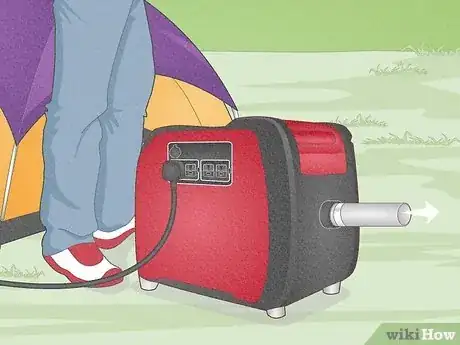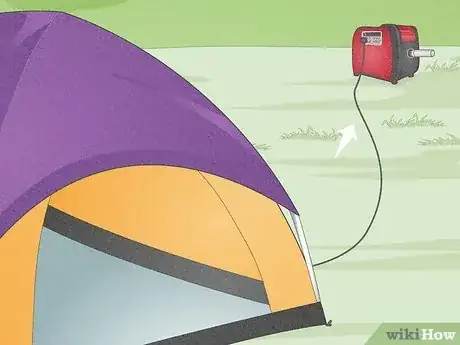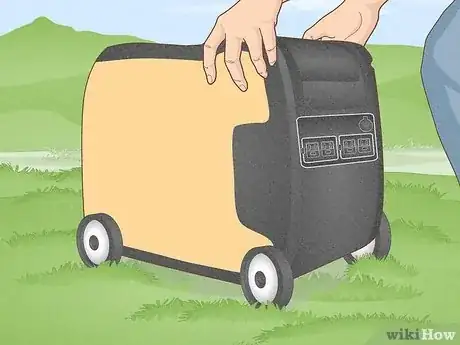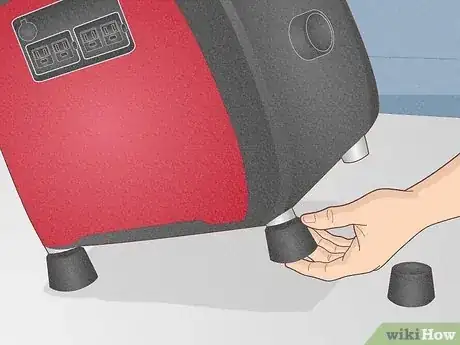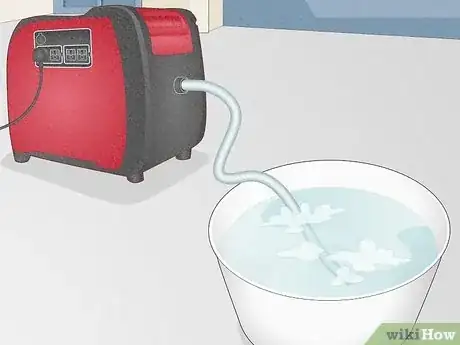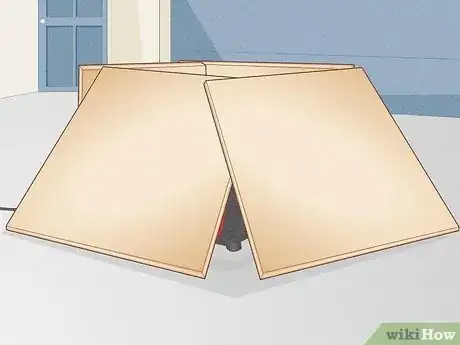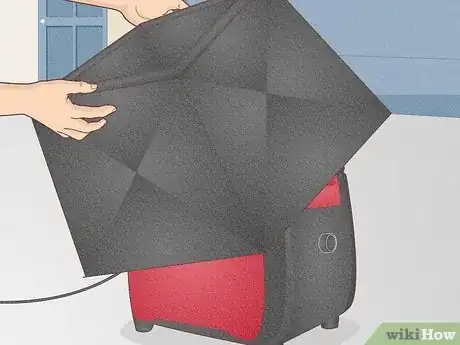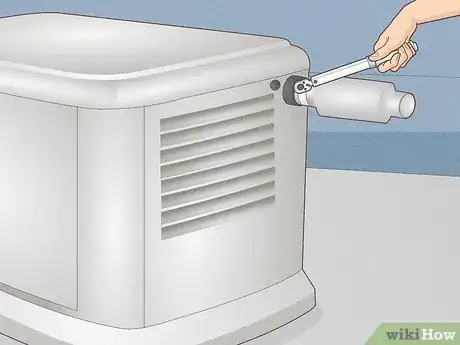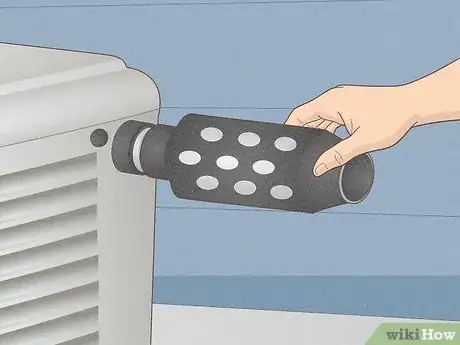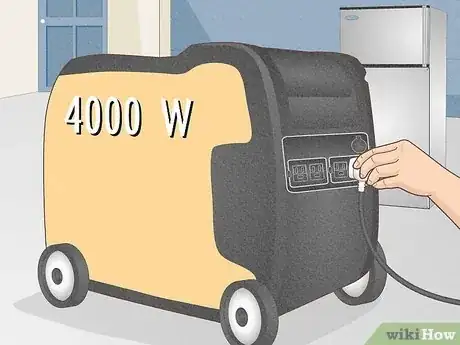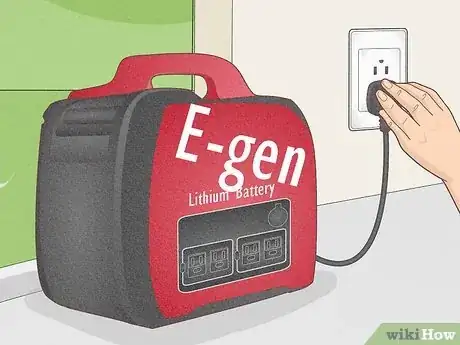This article was co-authored by Daniel Stoescu and by wikiHow staff writer, Glenn Carreau. Daniel Stoescu is a Master Electrician and the Owner and Operator of Home Tech Solutions, LLC in Hampton, Virginia. With over a decade of experience, Daniel specializes in wiring residential, commercial, and light industrial structures. The Home Tech Solutions team has over four decades of combined experience and offers comprehensive solutions for residential electrical needs.
This article has been viewed 5,452 times.
Generators are always helpful for camping and home use, but how can you muffle a generator’s constant buzzing sound? Luckily, there are many different solutions to this common problem, from quick hacks to longer-term fixes. Read on for a comprehensive guide to quieting a generator, so you can use your generator anytime without noise to stop you!
Things You Should Know
- Make quick adjustments by placing the generator on soft ground, repositioning the exhaust pipe, or moving the generator further away from you.
- Prepare for a quieter next run by getting rubber feet, plywood sound deflectors, or an acoustic enclosure box for your generator.
- For more involved fixes, replace the generator's muffler, install a silencer, or invest in a new generator (electric ones tend to be less noisy, for example).
Steps
Reposition the exhaust pipe.
-
When the exhaust pipe is facing away from you, it's less noisy. The position of the generator actually affects how much you hear it, especially when you're camping outdoors with it. When you set up the generator, ensure its exhaust pipe is facing in the opposite direction of you and your campsite. The sound waves will move away from you, and you'll hear the generator less.[1] X Research source
- If you have a generator that lets you point the exhaust pipe upwards at the sky, you can also do that. Either position will direct the sound away from you!
Move the generator away from you.
-
The more distance between you and the generator, the less you'll hear it. Though it might seem obvious, any sound is more audible the closer you are to it. So, place the generator as far from your campsite or home as possible—at least 20 feet (6.1 m) away. If you need one, use a long generator extension cable to get more distance and still hook up your generator successfully.[2] X Research source
- There may be limitations, especially if you share a campsite with others or have a small yard. Be courteous to the people around you, and place the generator somewhere that won't bother them.
- If you have a shed or detached garage on your property, either would be a great place to set up a generator to ensure you don't hear it in your home.
Set up the generator on a soft surface.
-
A soft surface will dampen the noise that the generator produces. If you're out camping, this can be as simple as placing the generator on a patch of grass or dirt. However, if you need to set it up on a hard surface, lay a rubber anti-vibration mat underneath the generator to soften the vibrations and noises.[3] X Research source
- Hard surfaces amplify the noise and vibrations produced by a generator. Avoid positioning it on any kind of concrete, wood, or asphalt.
Get rubber feet for the generator.
-
Rubber feet work like a soft surface, stopping vibrations and noise. They're an equally effective alternative to rubber mats and grassy ground, absorbing vibrations from the generator before they can echo out and make more noise.[4] X Research source Pick up a set of rubber generator feet, and check to make sure they're compatible with the generator you own before you buy!
Muffle the generator with water.
-
Water naturally dampens sound. Fill a 5 US gal (19 L) bucket with water. Attach a hose pipe to the end of the generator's exhaust and put the other end of the hose into the bucket of water. This simple hack will muffle the sounds from the generator's exhaust pipe and silence the generator when it runs.[5] X Research source
- Position the generator slightly higher up than the bucket and make a small pinprick in the hose. This prevents water from getting into the generator and pressure from building up.
- Test the generator after setting up to ensure it works!
- While this works for a quick fix for camping or running the generator for a few hours, it's best to find a different long-term solution.
Use sound deflectors.
-
Sound deflectors redirect the sounds of the generator downward. You can use something as simple as plywood sheets to deflect sound! Prop a plywood sheet against each side of your generator at an angle, with the top of the plywood touching the generator and the bottom further away. You’ll need 4 sheets total. The diagonal slant of the plywood catches sound and deflects it, so you don't hear it as much.[6] X Research source
- Make sure you have enough plywood to totally surround the generator. Generally, each sheet should be around 4 feet (1.2 m) wide and 3 feet (0.91 m) tall. However, that can vary based on your generator size.
Get an acoustic enclosure box for the generator.
-
Place the generator inside the enclosure to dampen the noise. An acoustic enclosure (also called a baffle box) provides insulation for the generator, blocking noise from passing outside the box.[7] X Research source Either buy a ZombieBox baffle box or construct one using plywood sheets, mass-loaded vinyl (MSV), and acoustic foam panels. To build the box:
- Measure your generator. Use the measurements to determine the size of your box, leaving enough space inside to fit the generator, plus the vinyl and foam panels that will cover the box's interior.
- Cut 6 plywood sheets to the desired size. These will be the sides of your box. Make holes in the top sheet for the generator's ventilation duct. Measure the duct first, so you know how big to cut the hole!
- Cut 6 pieces of MSV for each side of the box and 6 pieces of acoustic foam paneling. Make sure each has a ventilation hole to match the box.
- Attach the MSV to the interior sides of the box with a staple gun. Then, attach the foam panels to the MSV with a spray adhesive. Seal the sides with Green Glue, and construct the wood box.
Replace the generator's muffler.
-
A larger muffler can reduce the sound from the exhaust pipe. The exhaust pipe is one of the loudest parts of the generator, which is why mufflers are so useful for quieting them. If your existing muffler is a few years old, bring your generator to a small engine mechanic and see if you can switch it out for a newer muffler. Ask for a larger muffler, which will be able to block more sound.[8] X Research source
- Since there are many types of generators, a new muffler might also need to be custom-fitted to yours—another reason why speaking to a mechanic is so helpful.
Install a generator silencer.
-
A generator slip-on silencer suppresses noise from the generator. They stop the generator's noise at the source—its duct fan, which creates loud vibrations as it works. Buy a silencer that'll fit your generator; they're made for both larger and portable generators. Follow the installation instructions that come with your silencer of choice and attach it to the generator’s exhaust outlet.[9] X Research source
- Silencers are more narrow and tube-like than typical mufflers. They don't come with any mounting kit or extra supplies, as they’re designed to slip on easily and quiet the generator’s exhaust.
Buy a generator to fit your needs.
-
The more power a generator produces, the more noise it makes. Think about what you want to use a generator for before buying one. If you just need enough electricity to power smaller devices, a small generator that puts out a few hundred watts will be more than enough. Pick the generator that gives off only as much electricity as you’ll need.
- However, if you need to power large appliances like a refrigerator, you may need to get a larger generator in the 4000-6000 watt range. Maintaining air conditioning or a water heater can take upwards of 10,000 watts.
Invest in an electric generator.
-
Electric generators are cleaner and quieter than gas generators. They don't burn gas or propane and can even be recharged with solar panels. Because energy is stored on an internal battery rather than actively produced, electric generators run much more quietly than gas generators do. Consider investing in one when it's time to replace your old generator.[10] X Research source
- Most noise reduction techniques can't completely block out the sound from a gas generator, but electric generators don't make any sound—making them highly convenient!
You Might Also Like

 How to Get Spray Foam off Your Hands
How to Get Spray Foam off Your Hands






 How to Defrost a Samsung Ice Maker: A Quick Guide
How to Defrost a Samsung Ice Maker: A Quick Guide



References
- ↑ https://www.propaneva.com/generator-silencer/
- ↑ https://valuehunta.com/how-to-quiet-a-generator/
- ↑ https://www.propaneva.com/generator-silencer/
- ↑ https://valuehunta.com/how-to-quiet-a-generator/
- ↑ https://www.propaneva.com/generator-silencer/
- ↑ https://valuehunta.com/how-to-quiet-a-generator/
- ↑ https://www.propaneva.com/generator-silencer/
- ↑ https://www.propaneva.com/generator-silencer/
- ↑ https://valuehunta.com/how-to-quiet-a-generator/
About This Article

